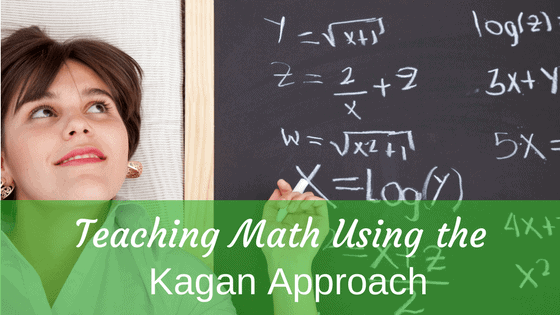Teaching Math Using the Kagan Approach To Publications / Articles - Teaching Math Using the Kagan Approach
Posted 3/27/17
Vickie Turner

With each person comes a different personality, with each teacher comes a different prospective, and with each student comes a diverse way of thinking. Every one acts differently according to their beliefs. As a teacher, I have found that I need to teach with my beliefs and depict how I will use it in my classroom.
Pragmatism is the philosophy known for change and experimentation. Learning does not need to be distinct and disciplined; it needs to be based on problem solving and hands on experiments. Since there are various learning styles I have found the most useful lessons to be interactive while incorporating higher order thinking skills. With this type of teaching, I have found a cooperative learning style to meet all learning needs and this method is called the Kagan Approach.
While I was in school math was unexciting, reading from a textbook and answering questions did not fit my kinesthetic learning style. As a math teacher I wanted to make sure I used an exciting approach that incorporated cooperative learning. The Kagan approach allows students to learn by doing with engaging activities that incorporate all learning styles while being active in their education.
For example, numbered heads together is a wonderful approach for any math lesson. Instead of students completing book work, they work with a group of four children to find their answer. Working with multiple students, allows each person to use their learning style with a wider variety of different techniques on how to solve a problem. Students are given a problem with one minute to silently think about their answer, when prompted they try and solve it by themselves, one minute later the teacher says “heads together” it is then students correspond their answers or help others on how to retrieve the correct solution. After I see majority of students ending their discussion one child gets to show their answer that the group has agreed on. Using this style of answering a question allows for the embarrassment of the wrong answer to be diminished, time for discussion with peers, as well as multiple learning styles engaging at one time.
While the Kagan approach offers hundreds of learning strategies, there is at least one strategy that works per lesson. Using an activity that incorporates all learning styles and levels allows students to form a deeper understanding of each educational concept, while having fun with their education. Students cannot learn to their full potential without taking an interest to their learning, the Kagan approach guides teachers with activities that help engage students in every aspect of learning.



